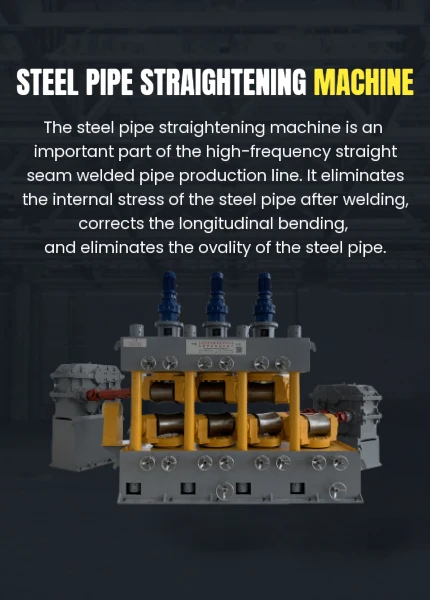welded pipe equipment
Understanding Welded Pipe Equipment An Essential Guide
In the modern industries of construction, manufacturing, and energy, welded pipes play a crucial role in facilitating the transport of fluids and gases. The equipment and technology associated with the production and use of welded pipes are vital components in ensuring safety, efficiency, and durability in various applications. This article delves into the essential aspects of welded pipe equipment, exploring its types, manufacturing processes, and applications.
Types of Welded Pipe Equipment
Welded pipe equipment can be categorized into several types based on the manufacturing processes employed and the specific needs they fulfill
. Essential equipment includes1. Welding Machines These machines are pivotal in the welded pipe production process. They utilize various welding techniques, such as TIG (Tungsten Inert Gas), MIG (Metal Inert Gas), and Submerged Arc Welding (SAW). Each technique has its unique advantages, suited for different pipe materials and thicknesses.
2. Pipe Bending Machines For installation purposes, pipes often need to be bent to fit specific configurations. Pipe bending machines allow manufacturers to create custom bends without compromising the structural integrity of the welded pipe.
3. Cutting Equipment Cutting machines, especially plasma or laser cutters, enable precise cutting of pipes into the desired lengths, ensuring optimal utilization of materials and adherence to project specifications.
4. Inspection Tools Quality control is essential in pipe manufacturing. Various inspection tools, including ultrasonic testing and X-ray equipment, ensure that the welded joints are free from defects and meet industry standards.
5. Coating and Treatment Equipment To enhance the durability and corrosion resistance of welded pipes, surface treatment equipment such as sandblasters and coatings are employed. These processes are crucial for pipes used in harsh environments.
Manufacturing Processes
The manufacturing of welded pipes generally involves several key stages
welded pipe equipment

1. Material Selection The choice of material is foundational, with options like carbon steel, stainless steel, and alloys being commonly used. Each material has inherent properties that determine its suitability for specific applications.
2. Forming The selected material is first shaped into a cylindrical form using rolls or other forming techniques. This stage is crucial in setting the initial geometry of the pipe.
3. Welding The edges of the formed pipe are joined together through a welding process, creating a continuous piece of pipe. The choice of welding method directly affects the strength and quality of the final product.
4. Heat Treatment Post-welding, some pipes undergo heat treatment to relieve stresses and improve mechanical properties. This step is particularly relevant for high-strength applications.
5. Finishing The final stages involve cleaning, coating, and applying any necessary treatments to enhance the pipe’s surface properties. The finishing affects both aesthetics and functionality.
Applications of Welded Pipes
Welded pipe equipment is employed in various industries, showcasing its versatility and reliability. Common applications include
- Oil and Gas Transporting crude oil and natural gas across vast distances, welded pipes ensure safe and efficient transportation under extreme conditions. - Water Supply and Sewage Municipal water systems utilize welded pipes to deliver clean water and manage wastewater effectively. - Construction In structural applications, welded pipes are often used in frameworks and supports due to their strength and durability.
Conclusion
Welded pipe equipment forms the backbone of many industrial processes, playing a critical role in the production and application of welded pipes. Understanding the types of equipment and manufacturing processes involved can provide valuable insight into the advantages and limitations of welded pipes in various applications. As industries evolve and demand for efficient and durable piping solutions grow, welded pipe technology will continue to advance, ensuring it meets the ever-changing needs of modern infrastructure.
-
High Frequency Straight Seam Welded Pipe Production Line-BzZhou Xinghua Machinery Equipment Manufacturing Co., LTD.|line pipe steel&welded gas pipeNewsJul.30,2025
-
High Frequency Straight Seam Welded Pipe Production Line-BzZhou Xinghua Machinery Equipment Manufacturing Co., LTD.|High Precision&Automated SolutionsNewsJul.30,2025
-
High Frequency Straight Seam Welded Pipe Production Line - BzZhou Xinghua Machinery Equipment Manufacturing Co., Ltd.NewsJul.30,2025
-
High Frequency Straight Seam Welded Pipe Production Line-BzZhou Xinghua Machinery Equipment Manufacturing Co., LTD.|Precision Welding, High EfficiencyNewsJul.30,2025
-
High Frequency Straight Seam Welded Pipe Production Line|BzZhou Xinghua|Precision Welding&EfficiencyNewsJul.30,2025
-
High Frequency Straight Seam Welded Pipe Production Line - BzZhou Xinghua|Precision Engineering&EfficiencyNewsJul.30,2025


